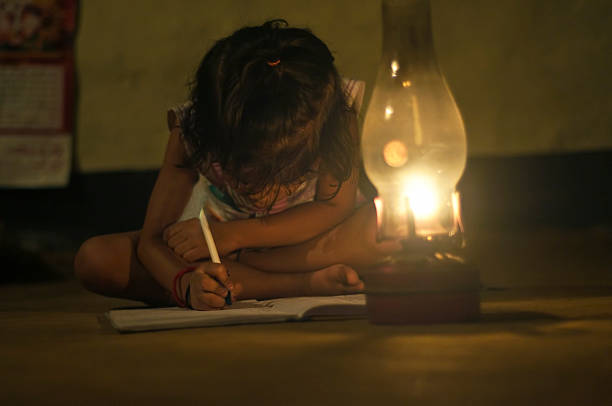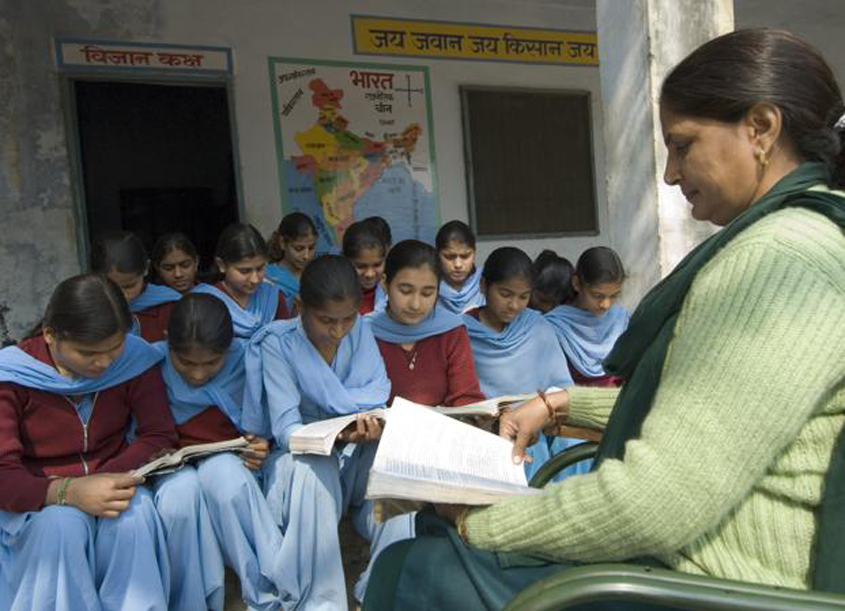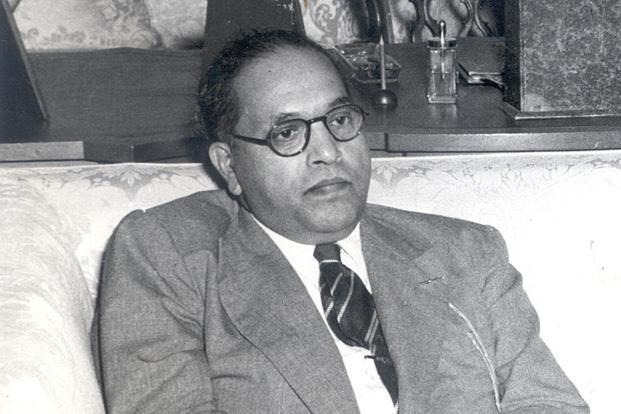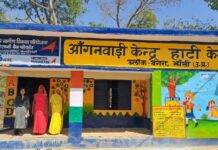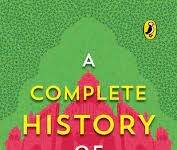FROM THE TEACHER’S PODIUM
Reading is central to the development of the learner’s mind, and when this habit is developed from an early age it opens up the window to a new world of possibilities and provides exposure that is critical for the development of the healthy mind.
Miss Heera Nawaz works at Cambridge School (K.R. Puram Branch), Bengaluru, and also takes classes for the Journalism Club of the school. She is the NIE Teacher Cocoordinator for Times of India at Cambridge School.
For teachers to foster the love of reading in school students, it is very essential for them to work with the librarians of the school library. Almost all educational institutions, which include schools, have an in-house library. Contrary to a public or private library catering to the general public, the school libraries are comparatively smaller in size and have books specific to the ideology, mindset and genre of that school. Most schools have a wide array of books since schools cater to a students’ imbibing of a knowledge base meant to be a foundation, on which they can build the edifice of their later lives. Thus, in most school libraries, one would find a lot of non-fiction books on topics like Science experiments, Dinosaurs, World History, Geographical Wonders, Festivals, etc.

Having said so much and before elucidating on how teachers can foster reading habit in students, let me just elaborate a bit on ‘WHY’ it is so important for students to read voraciously? A library which is an essential component in every school contains books, publications and journals, which foster a deep inbuilt desire in students to do extra reading and research on the topics discussed in class.
What are the benefits of extensive reading? School students who read voraciously are more adept at participating in general knowledge quizzes, essay writing competitions, and debates, since their knowledge base is authentic and deep. Apart from satiating pedagogical perceptions and perspectives for academic prowess, a library in a school also meets the dire need of letting students enter the marvelous, awesome world of fantasy, mystery and adventure via its fictional books. This makes a school library a center of attraction for students as there is something for everyone. A school library is treasure house not only for the students, but also for the teachers, who can augment their classes, with inputs from fiction books (should they be English Literature teachers) and nonfiction books. It has been found that the teachers who frequent libraries to do extra reading of reference books on their subject have been more effective in classroom deliverance.
An unfortunate trend: However, within recent years, it has been noticed that there is a comparatively less number of students who frequent the library to read voraciously. Since ‚The only constant is change‛, the times are indeed a’ changing. A survey conducted recently testified to the fact that the students of today would prefer buying birthday gifts like chocolates, toys and jewelry over buying books. It is apparent that the youngsters of today would rather spend hours at shopping malls rather than in a library.
However, there are a few diligent prodders who are still book lovers. It is observed by many teachers that several students judge books by several criteria like the cover design, the size of the book or its sensation quotient. It is reliably inferred that fewer and fewer students are using parameters or benchmarks, like didactic lessons to be imbibed, beautiful style of writing, or messages through such writers, like Ruskin Bond, Roald Dahl or R.K. Narayan. Instead, of reveling in classics written by William Shakespeare, Charles Dickens or Jane Austen, students want quick thrills and sensational book reading.
Who is the culprit in this highly metamorphosed mentality where deep-seated, knowledge-based reading has taken a backseat? It is a trifle disappointing that fewer students are frequenting libraries, due to the lure of digital tech gadgetry, which they may find more alluring than the reading of physical books. With this digital online invasion, many of the modern students are giving library books the short shrift and go by while they flaunt their online tutors, their Google-aided PCs and their notching of smart phones. Indeed, students should discern before it is too late the harms of ‚short cut‛ methods of imbibing knowledge. Students no longer spend hours in a library or go the extra mile to gain knowledge, as we used to do when we were in school. Instead of browsing through umpteen encyclopedias and visual dictionaries in a library where we had to sweat it out to gain knowledge, it is far easier to browse the World Wide Web internet, which provides thousands of pages of information – in a fraction of a second!
However, one cannot dismiss usage of the internet, but one must ‚keep up with the Joneses‛ without losing the touch and lure of reading physical books. How can teachers help in this regard? Being a teacher working at Cambridge School (K.R. Puram Branch), Bengaluru, I would like to put forward the following innovations implemented by my teacher colleagues in conjunction with the librarians of the school library. If other schools can follow suit and implement such innovations, it may go a substantial way to ensure that modern students adhere to reveling in the glory of reading physical books.
First, in my school, the teachers helped in fostering the reading habits among school children by first of all cocoordinating with the librarians to see that the physical books in the library are arranged and sorted out in a very attractive and aesthetic way. The books borrowed most often (in both the fiction and non-fiction categories) can be singled out and their front and back covers can be xeroxed and put up on the school notice boards along with a well-written summary, which does not divulge the climax or the end of the story. Information canbe given about the author, the publisher, and the critic’s assessment of the book. In Cambridge School library, we xeroxed the covers and added a well written summary of the book ‚Wings of Fire‛ by Dr. A. P. J. Abdul Kalam, the day after he expired on 27th July 2015. The students of the school came to know that the library had a copy of the book and soon it spread like wild fire with many of the students making a beeline to the library to read the book. Indeed, in the case of well-loved celebrities, students know that the library is the best place to garner more information and inputs.
Secondly, teachers helped in fostering the reading habit among students by joining the students of thousands of schools all over India to participate in the annual `One Nation Reading Together’ initiative. This `One Nation Reading Initiative’ organized by Scholastic (India) Pvt. Ltd. entails a special school assembly (in all schools) where in our school, a senior English teacher read out the Reading Oath and a poem, repeated in perfect unison by the rest of the school. In the year 2016-’17, the poem chosen was `Give me a Book’ written by Uma Krishnaswami, who is an eminent writer and poet. After all the students repeated the oath and poem, the students later in the day had special library classes where they could read other books written by other famous Indian authors, like Ruskin Bond, Sudha Murthy, Sarojini Naidu, R.K. Narayan, etc. Such initiatives taken by the enterprising teachers in several schools help the library to gain impetus and help in fostering the reading habit of quality books written by established and ethical writers. The whole day will be a day spent in reading, with the library even having huge graffiti posters (given by Scholastic) where students can write quotations on reading.
Thirdly, to further encourage the reading of physical books, teachers, especially our school English teachers co-ordinated activities (like the following) in the school libraries. The Chief Librarian of the school library along with other English teachers started a Book Reading Club, which met twice a month on alternate Saturdays, i.e., the first and third Saturdays of every month.
The Book Reading Club members were divided into groups. Each group was responsible for reading one particular classic, like `Alice in Wonderland’ by Lewis Carroll, `Oliver Twist’ by Charles Dickens, etc. Each group for that month focused on one book, with each club member handling one specific aspect or component of the book. For example, one person can be in charge of the storyline, with its twists and turns, another can be in charge of the main characters and their unique characteristics, etc. At the end of the month, there was an event to showcase what each group has done for the benefit of the other groups. Examples of what can be done include acting out the book (like a play), conducting an in depth quiz, arranging a summary writing competition, etc.
These activities will encourage and indeed infuse critical thinking faculties and analytical dissecting of the book to understand and appreciate the story plot, characterization, the author’s style, the book’s critical acclaim, etc. When the book reading club was set up, our staff, which included the English teachers, was euphoric that the students had developed a keen, unalloyed, deep and incisive interest in reading, making it a viable, pedagogical educational adjunct, rightly so, since reading of physical books is such a boon and has far-reaching benefits that are difficult to ignore.
This article is published in The New Leam, DECEMBER 2017 Issue( Vol .4 No.30-31) and available in print version. To buy contact us or write at thenewleam@gmail.com
The New Leam has no external source of funding. For retaining its uniqueness, its high quality, its distinctive philosophy we wish to reduce the degree of dependence on corporate funding. We believe that if individuals like you come forward and SUPPORT THIS ENDEAVOR can make the magazine self-reliant in a very innovative way.

